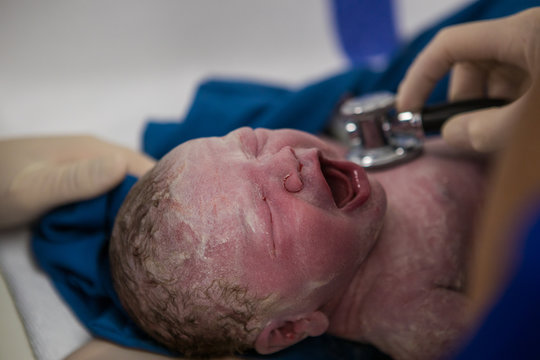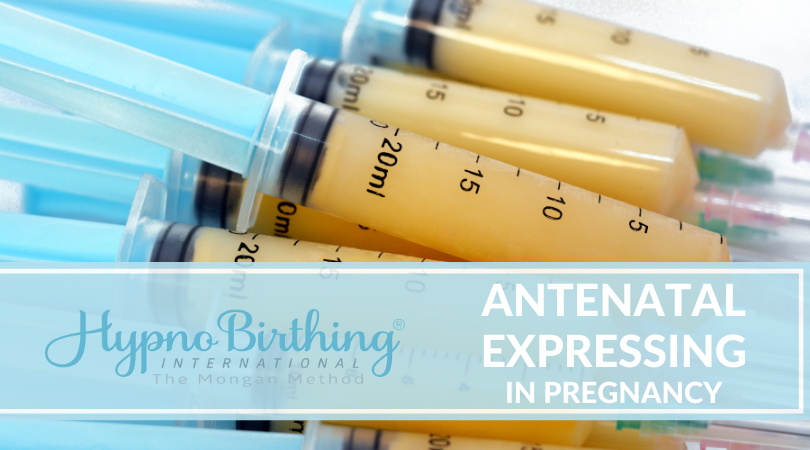The Truth on Birth Trauma and Why We Need to Speak Up for Our Babies
William R. Emerson, Ph.D., psychotherapist, workshop leader, writer, lecturer, and pioneer in the field of pre and perinatal psychology has studied for the past twenty-five years the process of birth and the kinds of impacts that birth has on babies. Through observation and recording of hundreds of birth’s of babies being born and following them for twenty years afterwards, he made many discoveries that he did not anticipate. He also interviewed medical and psychological practitioners about birth and the effects that births had on their patient. To access the birth memories of his clients, and their perceptions of how the obstetrical interventions affected their lives, they used regression therapy or sometimes they would appear spontaneously in different forms of therapy. The foremost discovery they made was that medical interventions appear to have long- term detrimental (physical and psychological) effects and, because of this, even the most commonly used obstetrical interventions must be questioned. In her book, “Obstetric Myths Versus Research Realities,” medical researcher Henci Goer documents that the most common obstetrical procedures of this era are routinely used when there is no research or scientific basis for their existence, nor are there sufficient indications of their safety (Goer, 1995).
Thomas Verny’s (1992) article on the effects of obstetrical interventions concluded, “Many high-tech tests, procedures and routines used in obstetrics have no proven efficacy and are really more in the nature of rituals than medical interventions”. He concluded that, because of potential harmful effects of obstetrical procedures, medical interventions should be limited to medically high-risk births rather than all pregnancies and births.
What can contribute to birth trauma?
The over medicalisation of birth and the emphasis and reliance on technology, the increases of stress (prenatal stress has been shown to increase the incidences of birth trauma), the increase in fetal alcohol and drug syndromes, unwanted pregnancies, prenatal abuse, and maternal prenatal trauma which may resurface while giving birth and can affect how giving birth is perceived and experienced, and are all contributors to birth trauma. When any of these factors are present, births can be experienced as traumatic, even when in the absence of obstetrical interventions there are no objective reasons for traumatisation. Thus prenatal trauma can be one independent source of birth traumatisation, and obstetrical interventions can be another and that the baby may be traumatised by either or both circumstances.
Using four separate measures of birth trauma, W. Emerson and his colleagues found that 45 percent of babies experience high levels of birth trauma, and these traumas require specialised treatment. Another 50 percent of babies experience some degree of birth trauma, usually ranging from mild to moderate, and babies are usually able to adapt to mild levels of trauma, and may require little or no specialised treatment. He states: “It is shocking to think that so many babies are traumatised by birth, and yet the measures and the levels of symptomology indicate that they are. For example, babies have many symptoms which parents and physicians consider normal, but they are actually symptoms of underlying birth trauma. For example, the total crying time per day for babies, considered within the normal range, is about two hours (Kitzinger, 1990), and can range up to six hours. However, it is informative to know that the average crying time per day for babies with no birth trauma is 20 minutes and most of their crying is used to communicate their needs and discomforts. This is only one example of many symptoms that are considered “normal” but, in fact, might reflect unresolved birth traumas.“
What can be the psychological impacts?
 The use of anesthesia during birth can cause shock. Firstly there are experiences of sudden, unexpected body and psychological changes which come as a surprise, and they overwhelm and shock the sensory, motor, emotional, and cognitive systems , leaving babies to being startled, frightened, and overwhelmed by the sudden appearance of body sensations of unknown origin, and feeling out of control resulting in psychological shock. They are followed by perceived insults to the self system: I was doing fine, I could have done it on my own and followed by a progressive loss of awareness and alertness, energy, orientation and direction, control and power, resulting in experiences of a progressive loss of consciousness; fear of dying; no motivation to do anything but sustain life thread; being barely conscious, henceforth also hindering their ability to form the important bond with the mother after birth. Secondly the baby is also exposed to the mother’s emotional and physical reaction to the anesthetic, as the drug passes through the placenta into the baby’s blood stream. This is worsened by the fact that the appropriate dose given to the mother’s weight acts as a overdose to the baby and it’s effects are magnified because fat retains anaesthesia, and babies’ bodies are proportionally high in fat content. This can lead to later in life getting more easily shocked by sudden changes for example car accidents, health crises, divorces, losing jobs, earthquakes and/or unexpected changes in body feelings.
The use of anesthesia during birth can cause shock. Firstly there are experiences of sudden, unexpected body and psychological changes which come as a surprise, and they overwhelm and shock the sensory, motor, emotional, and cognitive systems , leaving babies to being startled, frightened, and overwhelmed by the sudden appearance of body sensations of unknown origin, and feeling out of control resulting in psychological shock. They are followed by perceived insults to the self system: I was doing fine, I could have done it on my own and followed by a progressive loss of awareness and alertness, energy, orientation and direction, control and power, resulting in experiences of a progressive loss of consciousness; fear of dying; no motivation to do anything but sustain life thread; being barely conscious, henceforth also hindering their ability to form the important bond with the mother after birth. Secondly the baby is also exposed to the mother’s emotional and physical reaction to the anesthetic, as the drug passes through the placenta into the baby’s blood stream. This is worsened by the fact that the appropriate dose given to the mother’s weight acts as a overdose to the baby and it’s effects are magnified because fat retains anaesthesia, and babies’ bodies are proportionally high in fat content. This can lead to later in life getting more easily shocked by sudden changes for example car accidents, health crises, divorces, losing jobs, earthquakes and/or unexpected changes in body feelings.
Inductions and augmentations of labour through drugs create a greater frequency and intensity of contractions and more physical discomfort, which babies experience as well. They also interrupt the natural rhythm, timing, and pacing of birth and interfere with “who is in charge.“ In general it is believed that it creates feelings of being invaded, taken over, and controlled, leading to bonding deficiencies, shock syndromes, invasion-control complexes, productivity complexes, boundary complexes, self disorders, power complexes, and substance abuses, except interestingly when lesser dosages or mild aesthetics are used, the effects are experienced more as interruptions, perceived insults, and/or interference’s.
Forceps deliveries have many impacts, some of which are shock, bonding deficiencies, control complexes, productivity complexes, authoritarian complexes, confusions, pain complexes, and rescue complexes. These babies report feeling pain, intrusion, violence, coldness, objectivity, fear, invasion, interruption, and loss of control, and are often defensive to touch, this could include tension and anxieties about and/or resistances to being touched, stroked, cuddled, and/or held, and even can lead to i.e masochistic behaviours, masochistic sexuality, proneness to accidents, and susceptibility to physical abuse.
Caesareans can lead to long-term effects such as bonding deficiencies, chronic shock, and invasion-control complexes, as well as rescue complexes, inferiority complexes, guilt complexes, poor self esteem, task dysfunctionalities, boundary difficulties, and other dysfunctional behaviours and feelings. Parents report their babies going stiff when held and touched, and startle easily when there is a sudden move.
Also if the mother has lived difficult experiences during pregnancy, i.e. excessive amounts of alcohol, baby was prevented from coming out during birth, abortion attempts, this can influence the baby’s perception of the obstetrical interventions and create a traumatic experience. Other complications during birth, for example not progressing in the birth canal, could produce feelings of feeling stuck, fear, pain and pressure on head and difficulty in breathing.
However it is interesting to note, that when interventions are done for medical reasons because the baby is experiencing distress, babies tend to feel helped, rescued and/ or saved, rather than intruded upon, invaded, and controlled.
Can babies recover from birth trauma?
Most importantly babies can recover from trauma and they earlier this is done the better. They need their parents to understand and acknowledge their trauma and pains, then they feel heard and seen and healing can occur.
Clinical research has shown that when traumatic feelings are deeply experienced, they can be released through catharsis so that they are no longer “in” the organism, and the organism is freed from any trauma impacts (e.g., Goodfield, 1976).
Recapitulation is a process whereby people unconsciously recreate past events and traumatic experiences in their lives. The reason is to externalise the trauma so that it can be dealt with in the here-and-now, and henceforth released from their systems. This might or might not heal the trauma, but provide opportunities for it to be therapeutically dealt with and might reduce shock levels in the body. A variety of therapeutic procedures are available to heal trauma, plus the quality of the therapeutic relationship such as empathy, compassion, and safety are essential for a release and a re pattering and healing to occur.
With all this research and evidence on the effects of obstetrical interventions, it is clear that avoiding unnecessary medical interventions during pregnancy and birth dramatically lessens the likelihood of birth trauma for the newborn.
When we are informed and truly recognise the impacts of these interventions on babies, it changes how we make decisions around birth.
Reference:
Birth Trauma: The Psychological Effects of Obstetrical Interventions
Author: Emerson, William R, PhD Publication info: Journal of Prenatal & Perinatal Psychology & Health 13. 1 (Fall 1998): 11-44.
Written by HypnoBirthing Practitioner & Steering Committee Member, Christina Petersen









